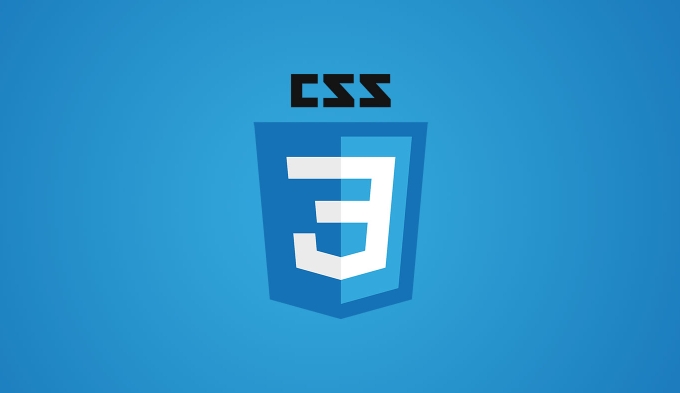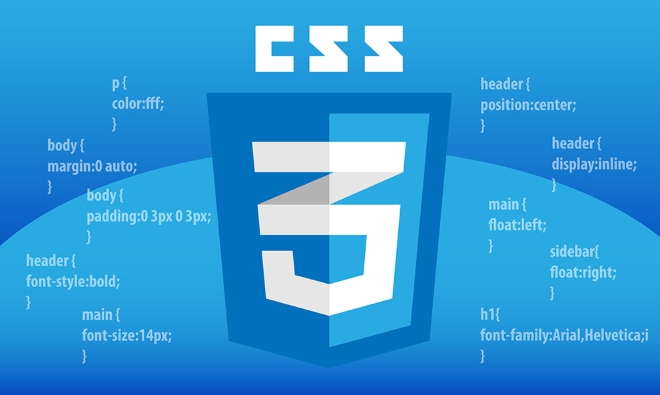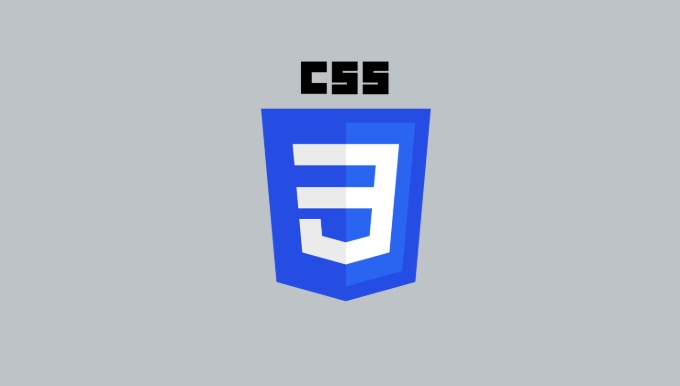To handle text layout issues in CSS, use white-space properties to control wrapping and overflow properties to manage truncation. 1. Use white-space with values like normal, nowrap, pre-wrap, or pre-line to define how text wraps. 2. Apply text-overflow: ellipsis along with overflow: hidden and white-space: nowrap for single-line truncation. 3. For multi-line truncation, use display: -webkit-box, -webkit-line-clamp, and -webkit-box-orient, noting limited browser support. 4. Set min-width: 0 on flex items to allow text wrapping in narrow containers. 5. Choose between word-break: break-all or overflow-wrap: break-word depending on whether splitting words is acceptable. These methods provide reliable text layout control without JavaScript.

When dealing with text layout in CSS, wrapping and overflow are two common issues that can break your design if not handled properly. The key is to understand when text should wrap, when it should be cut off, and how to control those behaviors depending on the context.

When Text Won’t Wrap: Using white-space
Sometimes text runs off the screen or stretches a container wider than intended — especially when there’s no space in the content, like a long URL or a block of code.

To fix this, you can use white-space. Here are some common values:
-
normal: Default behavior, collapses whitespace and wraps as needed. -
nowrap: Prevents wrapping entirely, forcing everything onto one line. -
pre-wrap: Preserves whitespace but allows wrapping. -
pre-line: Similar topre-wrap, but collapses sequences of whitespace into a single line break.
For example:

.text {
white-space: pre-wrap;
}This is useful for preserving formatting while still allowing the text to wrap inside containers.
Truncating Overflowing Text
If you want to cut off text that overflows its container and show an ellipsis (...), you’ll need to combine a few properties.
Here's a typical setup for single-line truncation:
.truncate {
white-space: nowrap;
overflow: hidden;
text-overflow: ellipsis;
}This ensures that any text that doesn’t fit will be replaced with an ellipsis instead of spilling out.
For multi-line truncation, you'll need a bit more:
.multi-line-truncate {
display: -webkit-box;
-webkit-line-clamp: 2;
-webkit-box-orient: vertical;
overflow: hidden;
}Keep in mind that -webkit-line-clamp only works in WebKit browsers (like Chrome and Safari), so it's best used where full cross-browser support isn't critical.
Making Sure Text Wraps Nicely in Layouts
Containers sometimes don’t respect text wrapping even when they should. This often happens when using flexbox or grid layouts.
One thing to watch out for: Flex items won’t shrink past their minimum content size by default. So if you have a narrow container with a long word, it might overflow.
To prevent that:
.container {
min-width: 0;
}Combined with overflow: hidden or text-overflow, this helps ensure the text respects the container size.
Also, remember that setting word-break or overflow-wrap can help with long words:
-
word-break: break-allwill split words at any character to fit inside the container. -
overflow-wrap: break-wordtries to keep whole words intact but breaks them if necessary.
Both are handy in different scenarios — choose based on whether you prefer readability or strict space control.
That’s basically it. These tools give you solid control over how text behaves in different situations without relying on JavaScript or hacks. Just keep in mind browser quirks, especially with multi-line truncation, and test where needed.
The above is the detailed content of Controlling text wrapping and overflow in CSS. For more information, please follow other related articles on the PHP Chinese website!

Hot AI Tools

Undress AI Tool
Undress images for free

Undresser.AI Undress
AI-powered app for creating realistic nude photos

AI Clothes Remover
Online AI tool for removing clothes from photos.

Clothoff.io
AI clothes remover

Video Face Swap
Swap faces in any video effortlessly with our completely free AI face swap tool!

Hot Article

Hot Tools

Notepad++7.3.1
Easy-to-use and free code editor

SublimeText3 Chinese version
Chinese version, very easy to use

Zend Studio 13.0.1
Powerful PHP integrated development environment

Dreamweaver CS6
Visual web development tools

SublimeText3 Mac version
God-level code editing software (SublimeText3)

Hot Topics
 What is 'render-blocking CSS'?
Jun 24, 2025 am 12:42 AM
What is 'render-blocking CSS'?
Jun 24, 2025 am 12:42 AM
CSS blocks page rendering because browsers view inline and external CSS as key resources by default, especially with imported stylesheets, header large amounts of inline CSS, and unoptimized media query styles. 1. Extract critical CSS and embed it into HTML; 2. Delay loading non-critical CSS through JavaScript; 3. Use media attributes to optimize loading such as print styles; 4. Compress and merge CSS to reduce requests. It is recommended to use tools to extract key CSS, combine rel="preload" asynchronous loading, and use media delayed loading reasonably to avoid excessive splitting and complex script control.
 External vs. Internal CSS: What's the Best Approach?
Jun 20, 2025 am 12:45 AM
External vs. Internal CSS: What's the Best Approach?
Jun 20, 2025 am 12:45 AM
ThebestapproachforCSSdependsontheproject'sspecificneeds.Forlargerprojects,externalCSSisbetterduetomaintainabilityandreusability;forsmallerprojectsorsingle-pageapplications,internalCSSmightbemoresuitable.It'scrucialtobalanceprojectsize,performanceneed
 Does my CSS must be on lower case?
Jun 19, 2025 am 12:29 AM
Does my CSS must be on lower case?
Jun 19, 2025 am 12:29 AM
No,CSSdoesnothavetobeinlowercase.However,usinglowercaseisrecommendedfor:1)Consistencyandreadability,2)Avoidingerrorsinrelatedtechnologies,3)Potentialperformancebenefits,and4)Improvedcollaborationwithinteams.
 CSS Case Sensitivity: Understanding What Matters
Jun 20, 2025 am 12:09 AM
CSS Case Sensitivity: Understanding What Matters
Jun 20, 2025 am 12:09 AM
CSSismostlycase-insensitive,butURLsandfontfamilynamesarecase-sensitive.1)Propertiesandvalueslikecolor:red;arenotcase-sensitive.2)URLsmustmatchtheserver'scase,e.g.,/images/Logo.png.3)Fontfamilynameslike'OpenSans'mustbeexact.
 What is Autoprefixer and how does it work?
Jul 02, 2025 am 01:15 AM
What is Autoprefixer and how does it work?
Jul 02, 2025 am 01:15 AM
Autoprefixer is a tool that automatically adds vendor prefixes to CSS attributes based on the target browser scope. 1. It solves the problem of manually maintaining prefixes with errors; 2. Work through the PostCSS plug-in form, parse CSS, analyze attributes that need to be prefixed, and generate code according to configuration; 3. The usage steps include installing plug-ins, setting browserslist, and enabling them in the build process; 4. Notes include not manually adding prefixes, keeping configuration updates, prefixes not all attributes, and it is recommended to use them with the preprocessor.
 What are CSS counters?
Jun 19, 2025 am 12:34 AM
What are CSS counters?
Jun 19, 2025 am 12:34 AM
CSScounterscanautomaticallynumbersectionsandlists.1)Usecounter-resettoinitialize,counter-incrementtoincrease,andcounter()orcounters()todisplayvalues.2)CombinewithJavaScriptfordynamiccontenttoensureaccurateupdates.
 CSS: When Does Case Matter (and When Doesn't)?
Jun 19, 2025 am 12:27 AM
CSS: When Does Case Matter (and When Doesn't)?
Jun 19, 2025 am 12:27 AM
In CSS, selector and attribute names are case-sensitive, while values, named colors, URLs, and custom attributes are case-sensitive. 1. The selector and attribute names are case-insensitive, such as background-color and background-Color are the same. 2. The hexadecimal color in the value is case-sensitive, but the named color is case-sensitive, such as red and Red is invalid. 3. URLs are case sensitive and may cause file loading problems. 4. Custom properties (variables) are case sensitive, and you need to pay attention to the consistency of case when using them.
 What is the conic-gradient() function?
Jul 01, 2025 am 01:16 AM
What is the conic-gradient() function?
Jul 01, 2025 am 01:16 AM
Theconic-gradient()functioninCSScreatescirculargradientsthatrotatecolorstopsaroundacentralpoint.1.Itisidealforpiecharts,progressindicators,colorwheels,anddecorativebackgrounds.2.Itworksbydefiningcolorstopsatspecificangles,optionallystartingfromadefin






